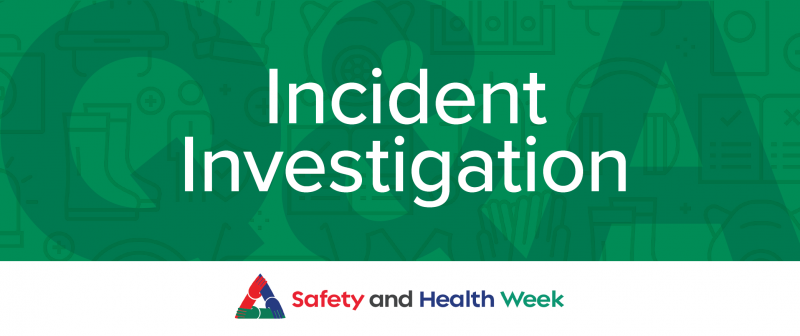About
About the Alliance
News and Events
Membership
Membership Types
Member Highlights
Services
Safety Assessments + Consultations
Advisor Services
Leadership and Psychological Safety Services
Training
COURSE CATALOG AND CLASSES
CONFERENCES & WORKSHOPS
Resources
By Type
OHS Competency Tools and Framework
COR Certification | OSSE
Getting Certified
COR / OSSE Resources
Recognition & Awards
Navigation
Member Highlights:
Safety Assessments + Consultations: Air Quality Assessment, Combustible Dust and Combustion Risk Assessments, Confined Spaces Assessment, Critical Incident Response Services, Ergonomics, Machine Safeguarding Assessment, Noise Hazards | Surveys and Testing Services
Advisor Services: Safety Needs Analysis | GAP Analysis, Safety Program Support (SPS) | Safety Compliance Support (SCS)
Leadership and Psychological Safety Services: Psychological Safety Training and Coaching, Leadership Training and Coaching, Respectful Workplace Support
COURSE CATALOG AND CLASSES: All Training Topics, Upcoming Classes, eLearning - Online Safety Training
By Type: Checklists, Guidebooks, Presentations, Quick Reference Cards, Safety Awareness Posters, Safety Videos, Templates, Toolbox Talks, Webinars
OHS Competency Tools and Framework:
Getting Certified: Steps to COR / OSSE Certification, COR / OSSE for Small Business, COR / OSSE Business Referral Program, Certified COR / OSSE External Auditors
12
Months
of Safety
of Safety
August 2025
Incident reporting
Employers are required to report and investigate all serious incidents and accidents in the workplace. You must report a serious injury or death of a worker to WorkSafeBC under the Workers Compensation Act.
What do you need to report to WorkSafeBC?
- Serious injuries or death of a worker
- Injuries requiring medical treatment beyond basic first aid
- Incidents where there was a potential for serious injury, even when no injury occurred
- Major structural issues
- Driving related incidents
- Explosive or blasting incidents
Basic Training
*** NEW | Immersive safety training *** In a realistic workplace environment, practice an incident investigation step-by-step. Through role-playing scenarios and decision points, build the skills to secure an accident scene, collect and analyze information, determine contributing factors, and complete an investigation report.
Course
An effective and systematic incident investigation program is a key driver to the continuous improvement of your health and safety program, policies. This course will examine the purpose and outcomes of an incident investigation. JHSC members, managers, supervisors or employees will learn how to determine the cause or causes of incidents, to identify any related unsafe conditions or acts, and to recommend corrective actions to prevent similar incidents.
The 8-hour Joint Health and Safety Committees (JHSC) training is required for all new members of a JHSC and new Worker Representatives. It is applicable for any B.C. employer in any industry.
Course
Risk management is critical for minimizing negative impacts, maximizing opportunities, and ensuring organizational success. In this course, learn about the principles of effective risk management for small and large organizations and gain the skills to help you make informed decisions and implement effective strategies.
Videos & Webinars
Incident reportingHealth and Safety Resources and Tools
WorkSafeBC has developed an employer incident investigation report (EIIR) template you can use to create all four reports that may be required following an incident in your workplace.
Critical Incident Response Services Diversified Rehabilitation Group has partnered with the Manufacturing Safety Alliance of BC to deliver the Critical Incident Response Service. A Critical Incident is any event outside the usual realm of human experience that is markedly distressing (i.e., evokes reactions of intense fear, helplessness, or horror). Critical Incidents involve a perceived threat […]
This guide will walk you through the process of completing an EIIR, which is required under the Workers Compensation Act.
Quick Reference Card
Several parts of the Worker’s Compensation Act (WCA) and The Occupational Health and Safety Regulation (OHSR) apply to Incident Reporting and Incident Investigation: WCA Part 1 Division 5 Section 53: Worker’s Notification of Injury Section 54: Employer’s Notifications of Injury WCA Part 3 Division 10 Section 172 thru Section 177
Toolbox Talk
An incident investigation is a process that analyses an incident to identify the unsafe acts and conditions that lead to the incident in order to develop control measures to prevent the recurrence of the incident.
Toolbox Talk
Through this Toolbox Talk learn what employers need to do after an incident to remain compliant with BC's Workers Compensation Act and WorkSafeBC.
Website
Developed by WorkSafeBC. The app is available for iOS and Android.
The Occupational Health and Safety (OHS) Regulation and the OHS provisions of the Workers Compensation Act contain legal requirements for workplace health and safety that must be met by all workplaces under the inspection jurisdiction of WorkSafeBC.
Website
The Workers Compensation Act (Act) was revised in 2019 as part of the government’s standard legislative revision process. The Act is organized into eight (8) parts.
News & Blog Articles
Who does this impact? WorkSafeBC has announced that in 2024, as part of their Planned Inspections Initiative, they will be focusing inspections on the following manufacturing classification units (CUs). Historically, workers in these CUs are at higher risk for serious injury....
About MSABC
Board & Governance
Contact Us



